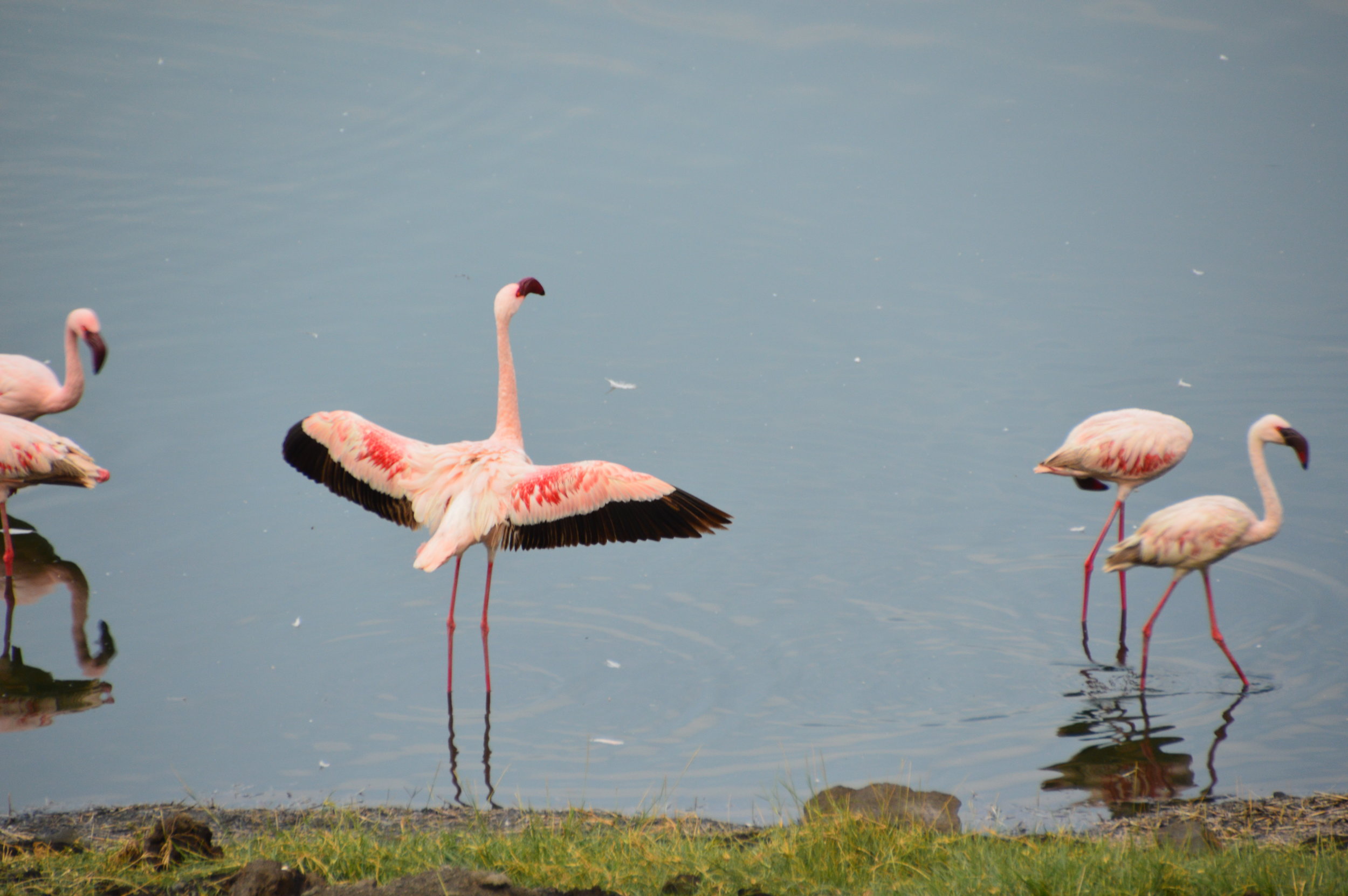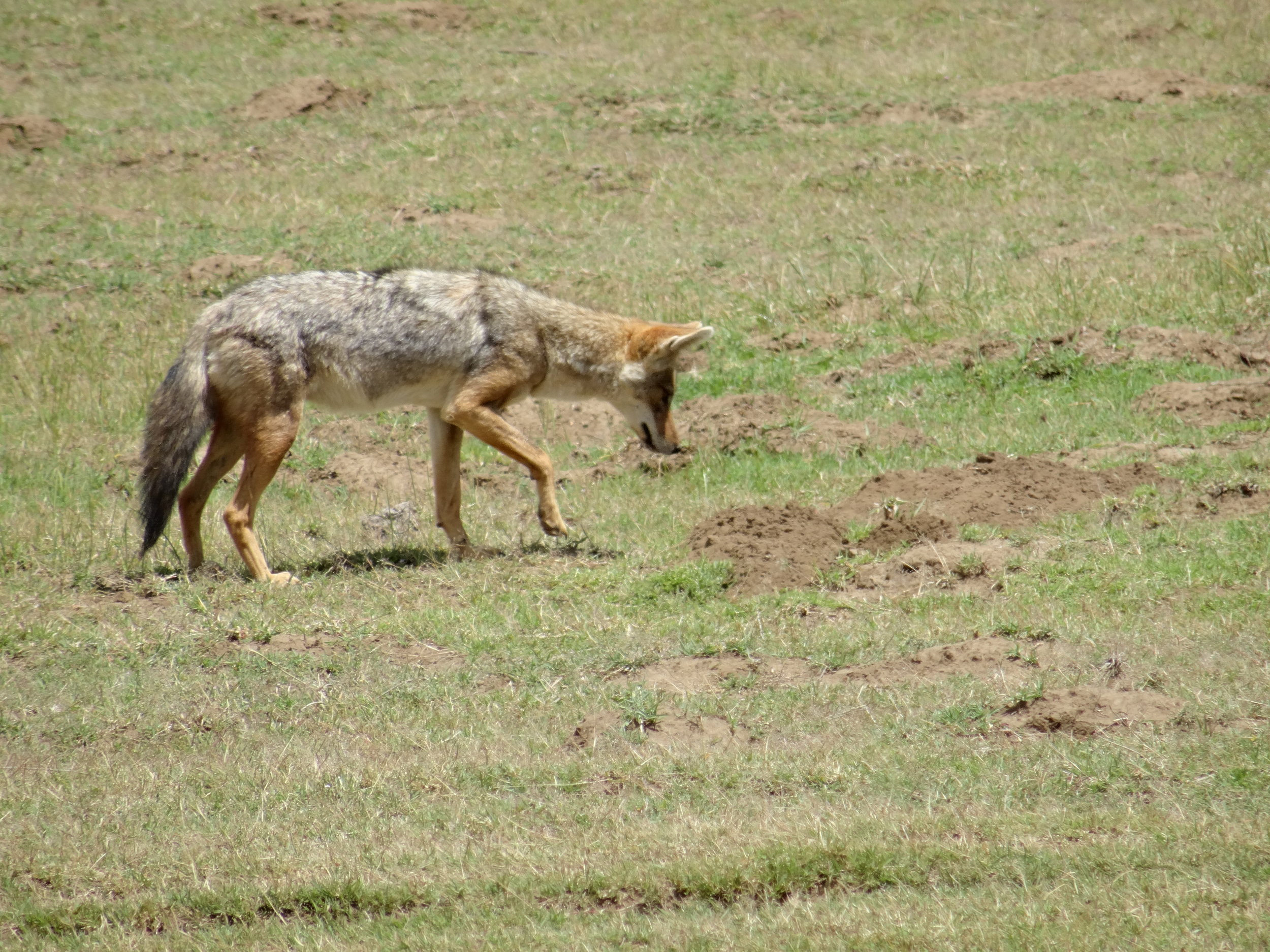Some days are for 'just' sitting by the waterhole. I say just, because some might think that I am not doing anything or that I am bored or lonely. Nothing is further from the truth, sitting in the wilds, by an active watering place is one of my greatest joys. I found a comfortable place to sit in the shade, looking over the bluff towards the river and sand flats below. It is a great location to experience full presence, as there can quite easily be animals coming from behind me as well, while my attention is on the those and their antics below.
On this particular day, many small elephant families came to drink and play, as well as large bulls who usually travel alone or in all male groups. There is an elephant sized mud puddle on the east bank of the river bed, sides worn smooth by many bodies rubbing. Today, one of the younger guys walks in and covers himself, rolling and using his trunk to splash dark grey mud all over his body. This is one of the ways for them to cool down, as well as to encase and rid themselves of pesky parasites. As the mud dries and shrinks, it pulls off the ticks or they might be rubbed off on a favorite tree down the path a ways. Although he is fully enjoying, a larger bull comes and he easily gives way for the elder. The bigger bull just strolls through, meandering calmly by, allowing the younger guy to return to his bath.
As the elder moves on, he meanders calmly, sniffing diff holes in the sandy soil next to the slow moving shallow water. He stops occasionally to pick up the white sand and spray it under his front legs. Soon coming to a stop below me, facing me and intent on the ground below. He begins digging in his two front legs, deeper and deeper into the sand, gaining good traction and a lower depth for a purpose that I was about to witness. Now his trunk stretches down, moving the sand away and excavating a hole in front of his feet. He digs deeper and forms a smaller vertical hole, lifting out and blowing out to the side a mixture of water, sand and mud slurry. This continues ten times, getting clearer and clearer and ending with only water.
Now it is his chance to drink the filtered, cooler water that was under the insulating sand. His pace is slow and sure, leisurely waiting for the water to refill his hole for his next sip. It is fascinating watching him turn the two tips at the end of his trunk under when reaching into the hole. Then his trunk stretches, elongating fully and smoothing on the outside while he sucks up many gallons. Then, reaching up into his mouth to expel the water, his outer trunk muscles contract, wrinkling the skin over them like an old well weathered face. His ears are held back when his head is lifted to take in water, and unfold out again as he lowers to extend his trunk deeply into the sand hole. He's an expert, taking long droughts into his mouth with no dripping or wasting of this precious commodity. He also has a favorite side, you could call him 'left trunked' as when he rests the tip of his trunk, he places it on his left tusk most often, and to the right only once. His left ear is also uniquely marked with two large holes and in between, one small pinpoint. Maybe we will meet again in the future.
It's been lovely sharing this space together. At one point, we hear a new sound and he and I both look up to check out a passing helicopter. All in all, it's been a magnificent few hours. I had previously heard about and seen these holes, but had not had the opportunity to watch them develop. The fresh water is now there for others to drink after the elephant leaves. During this day, I saw many come by to use this or other holes, drink or play by the river or just wander through. There were many elephants, mongoose, seven zebras, one limping zebra stallion, impala, reed buck, tawny eagles, hoopoe, storks, numerous water birds, sand grouse flocks, two giraffe males, dik dik, wildebeest, white crowned shrike, fish eagle, augar buzzard and grey heron to name just a few. Simply magnificent all.








